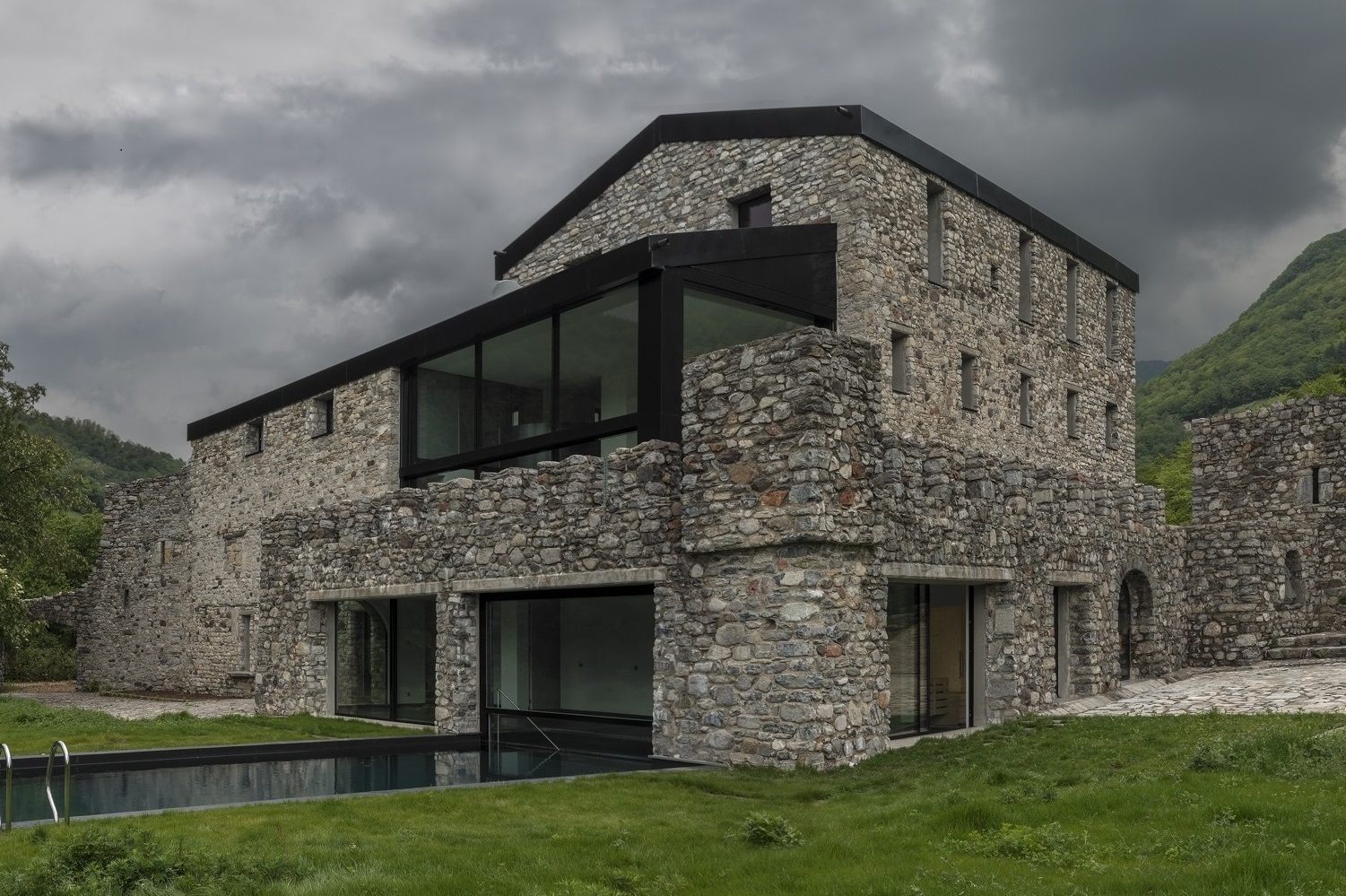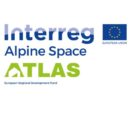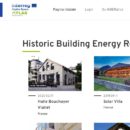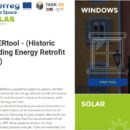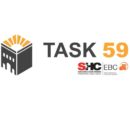February 9.2022
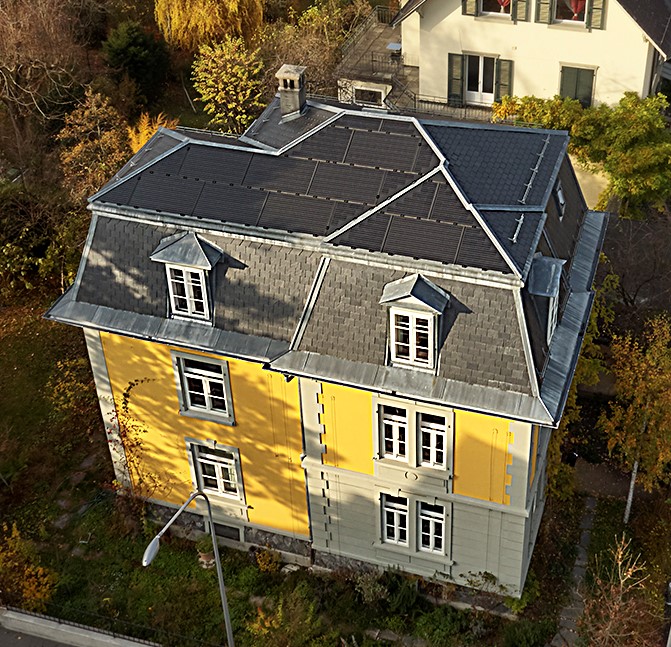
Single family house in Bern, Switzerland. ©Beat Wermuth und Partner Architekten GmbH. Photo: Caspar Martig.
Author: Dr Cristina S. Polo López, Researcher, Innovative Building Envelope Team, Swiss BiPV Competence Center.
To preserve the cultural landscape in the Alps and reach the ambitious climates targets will only be possible if we intensify our efforts in the valorization and sustainable use of the historic buildings and understand this task as a mission for the whole civil society. The ATLAS Alpine Space Interreg project pointed to the (re)discovery of – not necessarily protected – traditional architecture (buildings and ensembles), often situated in less-favoured areas and with a low level on energy efficiency and living comfort. Moreover, it will pave the way for their sustainable development towards low carbon Alpine lifestyle and society and contributing to EU Strategy for the Alpine Region (EUSALP). ATLAS capitalizes results of past and ongoing research projects in the Alpine region and develops policy instruments at three levels:
- A Historic Building Energy Retrofit ATLAS, HiBERatlas tool for the capitalization of best practice building retrofit.
- Concepts for low carbon retrofit and RES integration with a ToolKit for municipalities.
- Historic building retrofit advanced tool, HiBERtool such as an online decision-support tool for environmental building retrofit.
The energy efficient renovation of historic buildings and the sustainable development of cultural landscapes is a highly complex task and requests for expert knowledge from various disciplines. This is where the ATLAS project comes in. A core element of the ATLAS project was the collection of good examples on very different levels, from historic building typologies and existing guidelines for energy retrofitting, to the use of renewable energy in a regional context, to the documentation of best practice building renovations in the HiBERatlas (www.hiberatlas.com) and the technical solutions for energy retrofitting in the HiBERtool (www.tool.hiberatlas.com). These tools are strategic elements aiming at establishing transnationally integrated low carbon policy instruments.
The Historic Building Energy Retrofit ATLAS database presents best-practice examples of how historic buildings can be renovated to achieve high levels of energy efficiency while respecting and protecting its heritage significance. The tool provides highlights the key figures of any renovation, describes the cultural values of the buildings as well as the building construction and gives at the same time the possibility to get information about technical solutions and measures implemented in the respective case study. The owners’ voices of the best practice examples, which have also been recorded and which highlight the indoor climate, preservation of historical values and low energy consumption, will be important impulses to « follow ». Moreover, due to the collaboration with the International Energy Agency’s research collaborative project IEA SHC Task 59 on « Renovating historic buildings towards zero energy », the region was not restricted or limited to the alpine region. With the end of these research projects almost 60 inspiring renovation projects in historic buildings are available from all over the world. Ten relevant projects from Switzerland that includes solar building integrated BIPV solutions in historic buildings are now accessible in HiBERatlas. The “HiBERatlas” online tool, has been awarded with the European Solar Prize 2021, an annual award that every year recognizes renewable energy innovators from across Europe.
The HiBERtool, a historic-compatible technical solutions repository helps practitioners find the perfect solution for the conservation of historic buildings. The tool explains more than 150 retrofit measures, which range from increasing a building’s energy efficiency to providing solar energy on site. With just a few clicks, users will get solutions tailored specifically to their needs. Page navigation is fairly intuitive, which renders reading a manual entirely unnecessary. All solutions come with a detailed description in the form of a downloadable PDF.
The results of the project can be used very well to convince owners of historic buildings that rehabilitation is a better solution than demolition. With this great collection the knowledge transfer from local existing good experiences to the transnational context was successfully done and the number of entries is still increasing as now the the database is open to everyone.
Acknowledgements: The European Interreg Alpine Space project “ATLAS”, was co-funded by the European Union (grant No. ASP644) and Swiss participation of SUPSI co-financed under the NPR (SECO) through the coordinated European regional development fund and coordinated by the Federal Office for Spatial Development (ARE) with the support of the Swiss Federal Office of Energy (SFOE) for the participation to the joint IEA-SHC Task59/IEA-EBC Annex 76 activities (grant No. SI/501896-01).
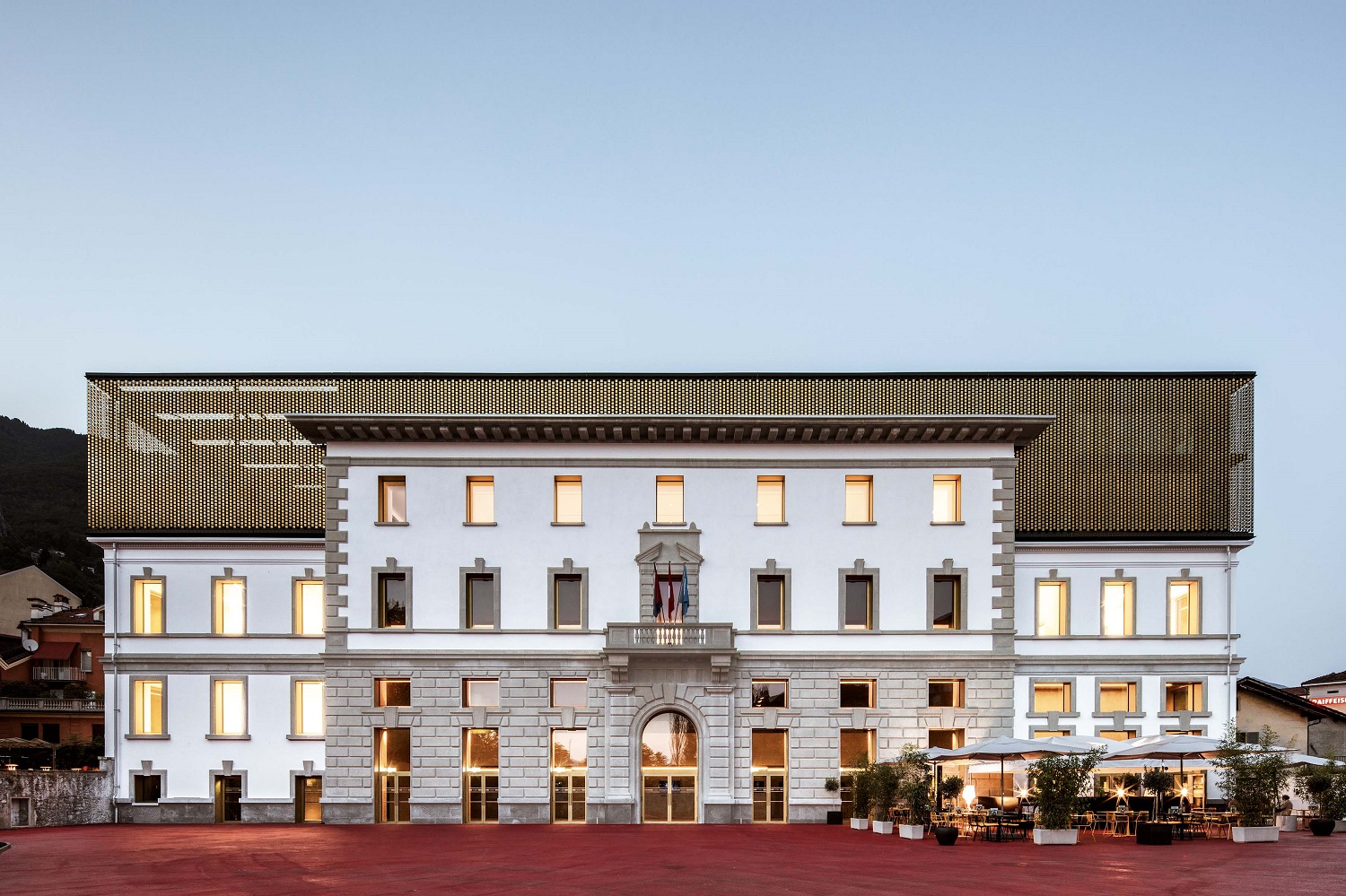
Palacinema Locarno – Locarno, Switzerland. ©AZPML + DFN (architects consortium). Photo: G. Marafiotti
